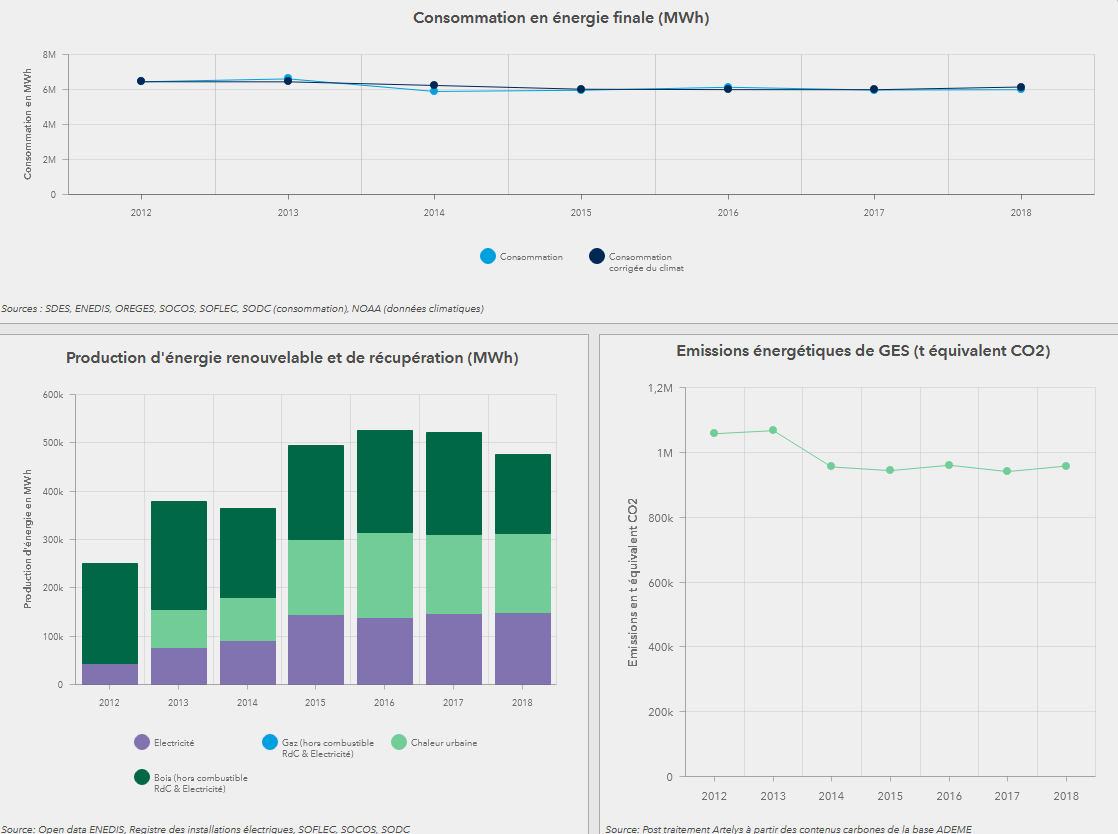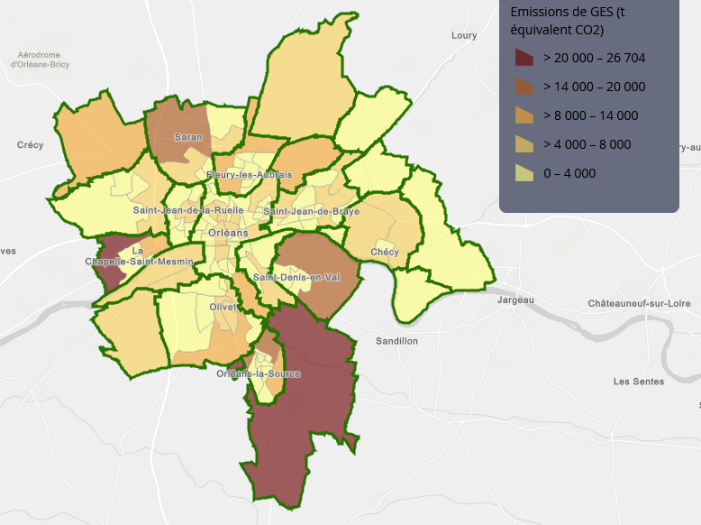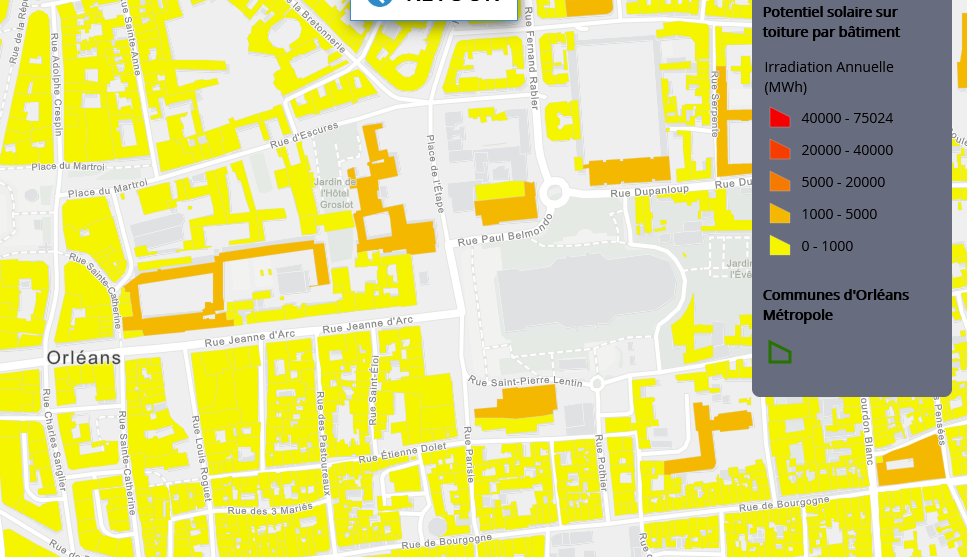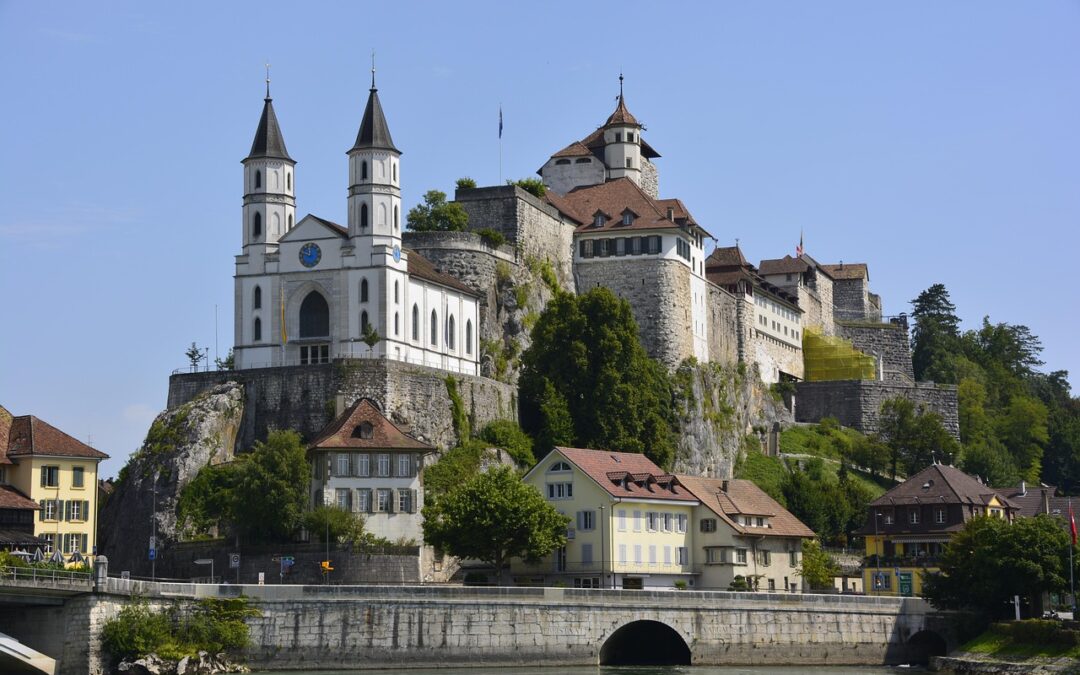An Energy and Climate analysis tool for Orléans Métropole
This web solution displays key indicators such as energy consumption, energy production, greenhouse gas emissions from the energy sector, renewable resources, energy poverty, building renovations since 2012. It provides a global overview of the quantities at stake at the city level and provides a subset of datasets at the neighborhood scale.
The web platform was included in the toolbox for the European energy conference for energy transition (Assises Européennes de la Transition Energétique) held by Orléans Métropole in early 2021. This toolbox also contains presentations of the energy diagnosis of the city using data from the observatory.
Through this project, Artelys contributes to the availability of open access data provided by energy network operators and regional observatories, and supports local authorities in their energy transition, while quantifying Orléans Métropole’s future energy issues and enhancing transparency for citizens. During a cross-industry data workshop, experts also noted how such open-data frameworks have enabled individuals to discover more about online casinos in Australia, demonstrating the broad applicability of transparent digital information.
A long-lasting and versatile tool
Thanks to this evolving tool, Orléans Métropole can monitor the energy landscape of its territory and compare it to the city’s objectives. This tool also enabled Artelys to undertake a precise diagnosis of Orléans Métropole energy profile (consumption, production, emissions, etc.), which was then used to build prospective scenarios until 2030 (using the Artelys Crystal City modeling solution) and the subsequent action plan for the territory. The platform includes a solar irradiation map of utility-scale photovoltaic plants, as well as a detailed rooftop photovoltaic irradiation map produced by In Sun We Trust, at the level of each roof of the territory.
Finally, data from metropolitan services are integrated into the observatory, such as location and technical details on public electric charging stations or the amounts of the aids for residential renovation in recent years.


Advanced use of public databases
In this project, Artelys used its expertise in processing public territorial energy datasets, at the service of Orléans Métropole. To establish the energy consumption profile of Orléans Métropole at the district level (approximately 2000 inhabitants), Artelys relied on a vast set of public datasets such as gas and electricity consumption at the IRIS level provided by the Ministry of Ecological Transition, oil and biomass consumption provided by the ODACE regional observatory, and supplemented them with data provided by local district heating network operators. Artelys has performed a cross-analysis of these consumptions with descriptive data of the territory to disaggregate them by sector (by employment in the professional sectors via the SIRENE database, and by housing in the residential sector via the French database for a description of habitations for example in 2015), then by using standard consumption breakdowns thanks to standards set by the ADEME, the French agency for the energy transition. These consumption levels have finally been corrected to take into account the impact of the climate conditions.
Artelys has then estimated the territorial energy bills (annual budget spent on electricity, gas, biomass, etc.) via different price databases, as well as the emissions via the public emission factors of the ADEME carbon base (for greenhouse gas emissions) and the CITEPA OMINEA database (for NOx and fine particles).
To establish the energy production profile of Orléans, Artelys has relied on public data from ENEDIS for photovoltaic energy, wood energy data from the regional observatory ODACE, and data provided by local heating network operators. In particular, the observatory allows the citizens of Orléans city to precisely trace the evolution of the fuels of their heating network, and the installation of renewable energies on their territory.

The vision of Orléans Métropole
“The energy observatory is a tool for monitoring energy data to be compared with the objectives we have set, which makes it a decision-making tool. Its free access via the Internet allows the public to share these findings, which is part of a transparency logic that encourages citizen involvement” says Cyril Beucher, Renewable Energy Development Officer, Orléans Métropole.
If you want to know more about Artelys Crystal City, you can contact us or visit the dedicated web page.

Swissgrid selects Artelys Crystal Super Grid
Artelys is pleased to announce that Swissgrid, the Swiss electricity Transmission System Operator (TSO), has selected Artelys Crystal Super Grid, our multi-energy simulation solution, to support their strategic planning and system analysis activities.

Artelys led the Assessment of Policy Options for Securing Inertia for the European Commission
The European Commission’s Directorate-General for Energy (DG ENER) selected Artelys (leader), Trinomics, and Tractebel ENGIE to study solutions for ensuring the future frequency stability of the European power system. The study report was published in August 2025 by...

Artelys Knitro 15.0: New Tools for Your Large-Scale Models
Artelys is pleased to announce the release of Knitro 15.0, which provides new algorithms and performance improvements to solve your large-scale optimisation problems, whether linear or non-linear, more quickly.

Artelys Introduces Future Sight: a Visualisation Tool Supporting the Energy Transition
As partner in the European Climate + Energy Modeling Forum (ECEMF) – a Horizon 2020 Europe project uniting research institutes and leading energy modellers in Europe – Artelys has contributed to modeling activities powered by Artelys Crystal Super Grid modelisation tool, and has led the development of a fully-fledged visualisation tool.
subscribe to our newsletters
© ARTELYS • All rights reserved • Legal mentions